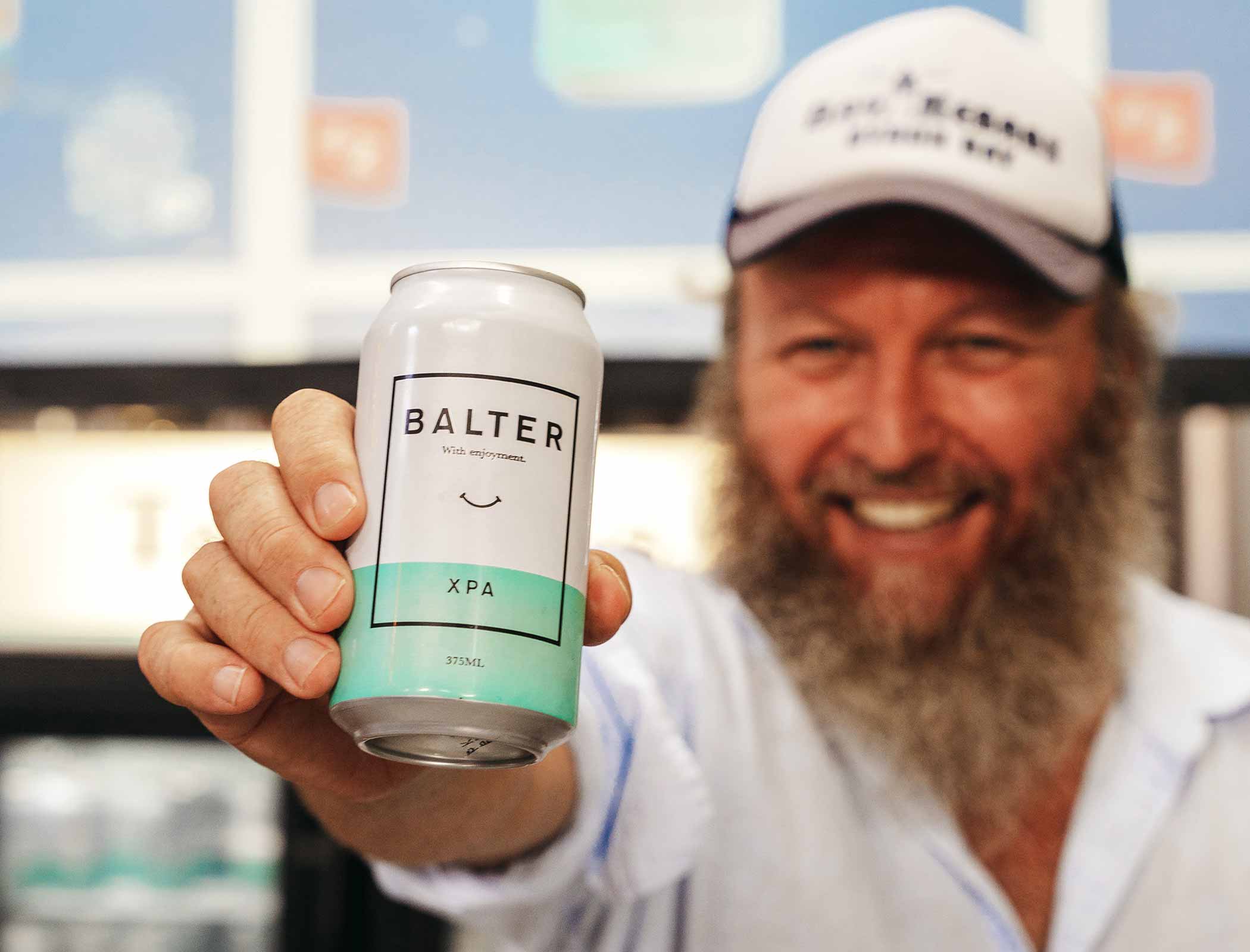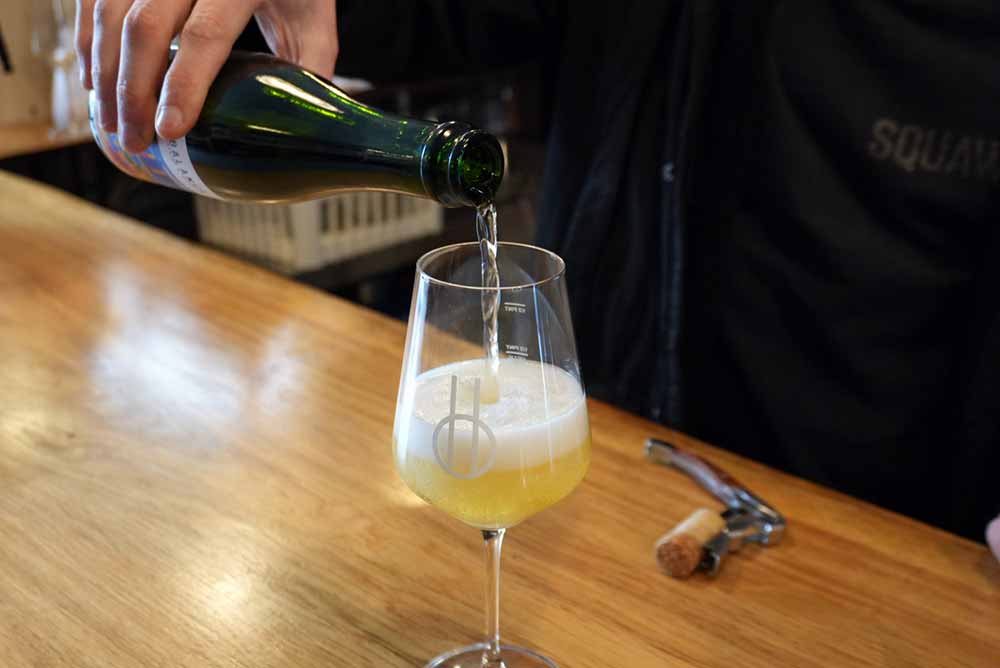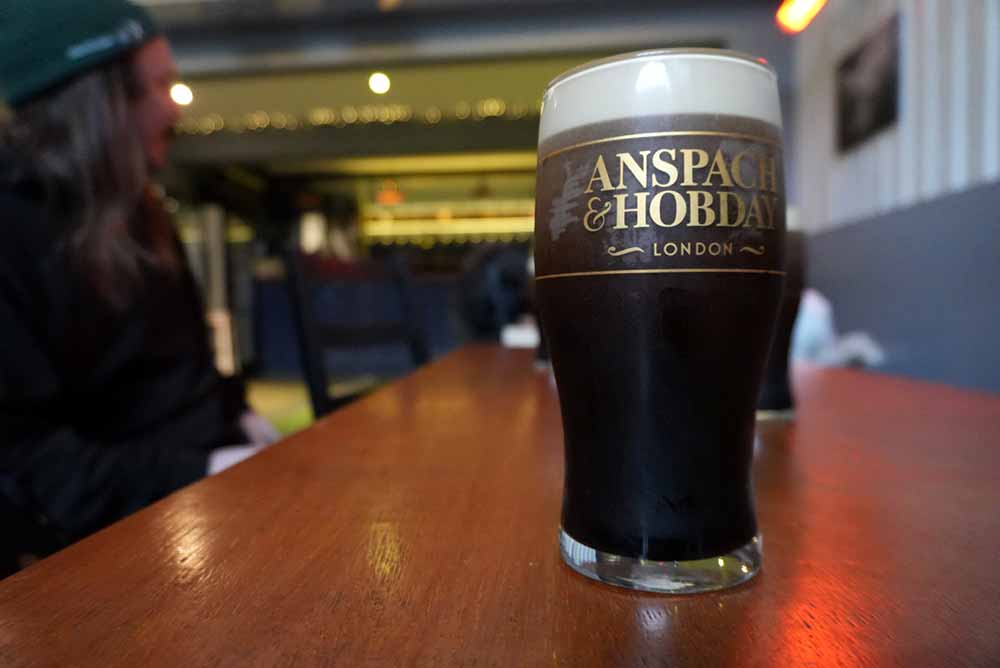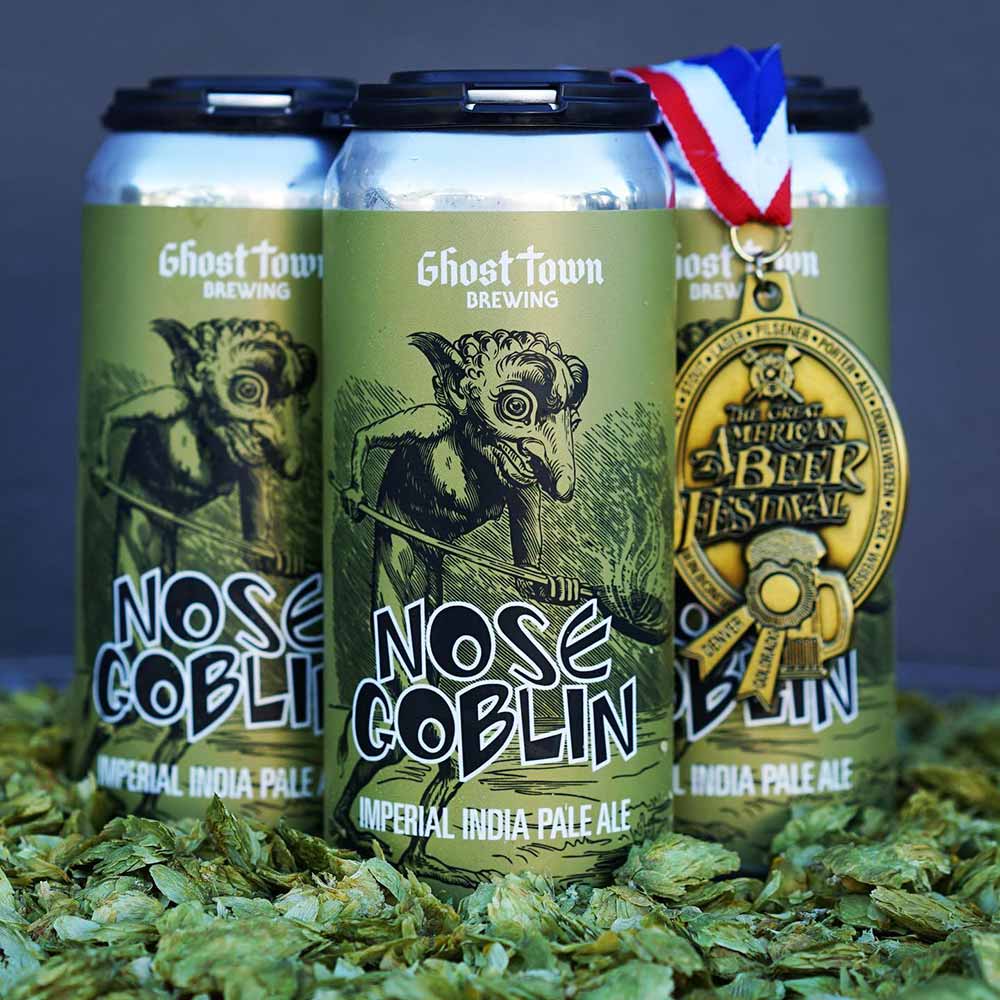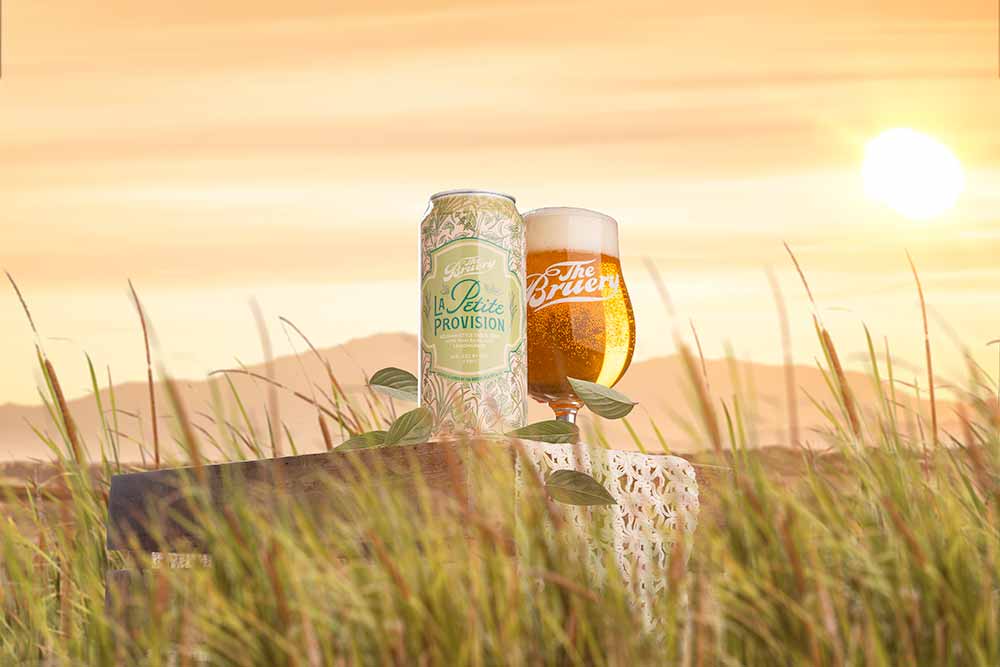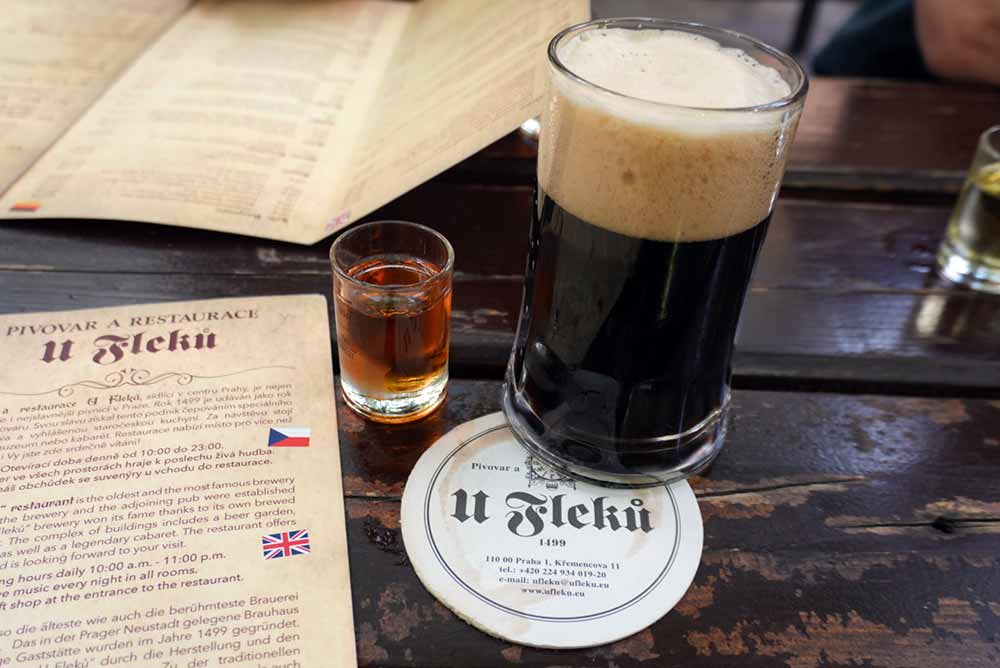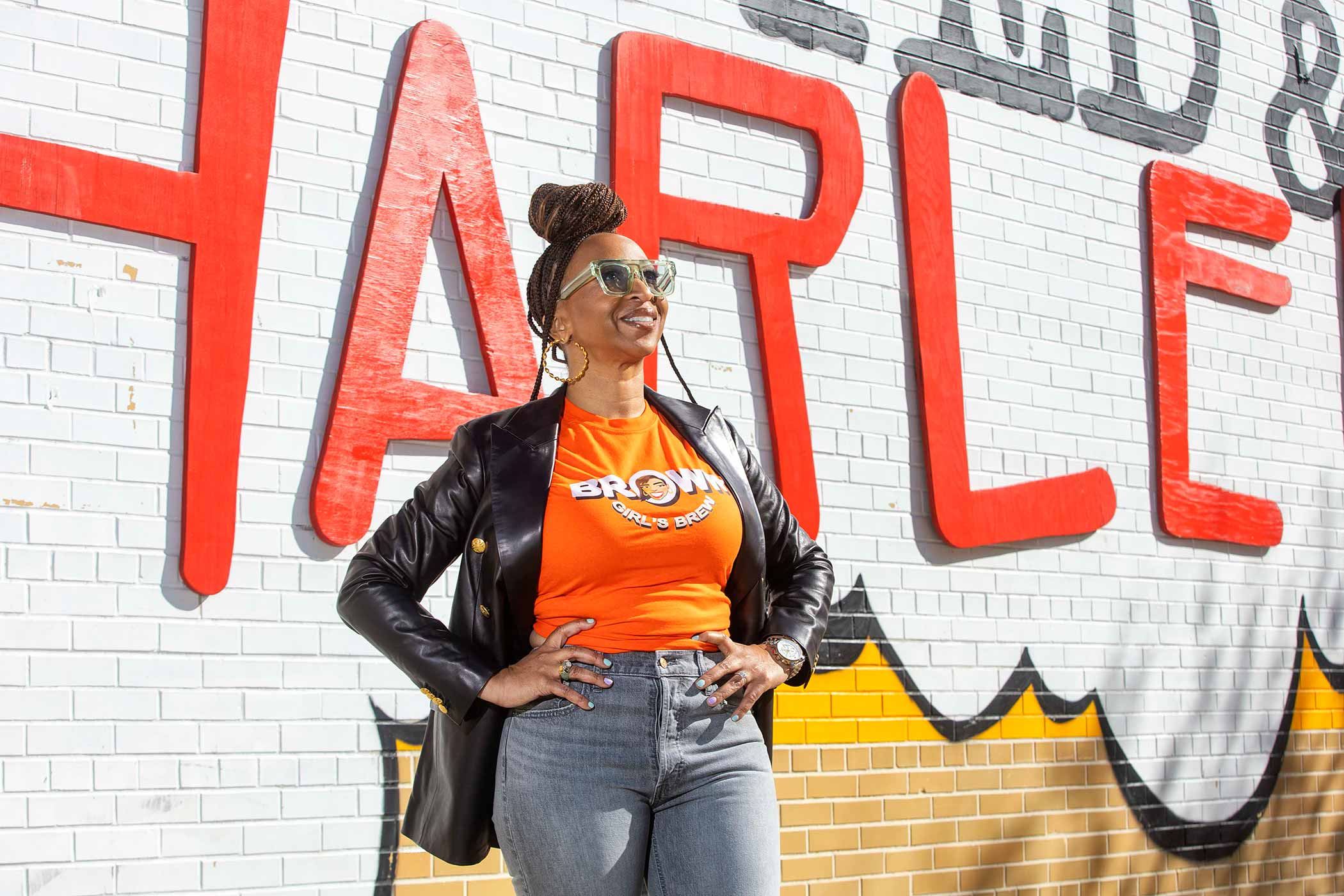Shop
The 19 Best Beers We Drank in 2024
Drink up.
The Juiciest of the Year!
Here’s a fun fact: In 2024, Hop Culture Senior Content Editor Grace Lee-Weitz drank 534 unique beers from 211 different breweries in 117 styles across four countries, two continents, and five states.
Between the places we’ve traveled, taprooms we’ve visited, cans and bottles we’ve opened with friends, and beers we’ve drank across the globe, we have enjoyed a fair amount of libations.
As the stats show!
It’s a blessing and a curse, because the more we drink every year, the more challenging this list gets for us to assemble.
Luckily, a few (read: many) left an impression—from a fresh-hop beer in the cellars of Budvar in Czechia to a “corny” IPL in Texas to an electrifying pineapple-tasting saison in Manchester, these are the beers that tell the stories of our year.
Each beer has a history for us. Each beer has a tale to tell. And we’re here to tell them.
Again this year, to obtain a representative list, we asked members of the Next Glass team from different backgrounds and geographies to share their picks with us.
Below, we’ve listed our top choices for the best beers of 2024, presented in no particular order.
The Best Craft Beers of 2024
Balter XPA
Balter Brewing Company — Currumbin, Queensland, Australia
Submitted by: Grace Lee-Weitz, Senior Content Editor, Hop Culture
Extra Pale Ale – When we attribute one beer style to one person, that usually holds weight. Read: Josef Groll + pilsner, Ken Grossman + American pale ale, Birrificio Italiano Founder and Brewer Agostini Arioli + Italian pilsner,former Wayfinder Brewmaster Kevin Davey + Cold IPA.
So why haven’t we heard more about Balter Head Brewer Scotty Hargrave and XPA, extra pale ale, a style that has absolutely exploded in Australia?
It could be that those pesky 9,204 miles separate our two countries, but that hasn’t stopped hops such as Galaxy, Vic Secret, and Enigma from making their way to our shores.
Perhaps it’s because, for so long, another three-letter acronym has dominated: IPA.
Whatever the exact reason, XPA has finally made it to the States with brewers up and down the West Coast trying their hand at this lower-ABV, yet still hop-forward, style that’s absolutely crushable and crushing it.
I one hundred percent get the hype building behind Hargrave’s version—Balter XPA, which I had a chance to try at the Firestone Walker Invitation this past June.
This beer began as Hargrave’s small homebrewing project in the early 2010s with a single question: “Is there a way I can have saturated hop flavor in a sessionable beer?” Hargrave says he asked himself.
On his weekends, he played around with making a sessionable beer that showed off tropical, new-world American varieties. He wanted a juicy, hop-forward beer that wasn’t a 7% ABV IPA.
“It used to be a bit of a joke, like, here’s Scotty the dickhead making 50,000 liters of beer during the week [and] going home and making 50 liters of beer on a Saturday in his garage,” explains Hargrave.
He thought he had something after progressing through fifteen to twenty different iterations over a few years.
Simultaneously, Balter came calling, looking for a head brewer. They wanted to open the brewery with a bang. Hargrave gave them XPA.
“I wanted to showcase these vibrant, tropical, and new-world hop characters without the beer having to be huge,” he says. “I wanted that hop saturation of an IPA and the enjoyment of those flavors but balance and sessionable alcohol.”
Hargrave still can’t believe this archetypal beer has taken off.
“I made it for here; I made it for me,” he divulges. “It was a puzzle. I want to use all these new hops and put them in a beer, but I don’t want to be stuck just having one of them. And I’d like to sit at the edge of the pool and drink three or four of these if I want.”
But I and some of the most well-recognized brewers on the West Coast, from Cloudwater in Seattle, WA, to Green Cheek in Orange, CA, get it.
It’s just this uber clean, immutably refreshing, low ABV beer that’s simultaneously packed with tropical notes from the American hops. It’s XPA perfection.
It’s the kind of beer you always want in your hand and never get tired of—in other words, it’s a winner.
Sonoma
Track Brewing Company — Manchester, England
Submitted by: Grace Lee-Weitz, Senior Content Editor, Hop Culture
Hazy Pale Ale – An epic bike trip from Virginia to California inspired Track Brewing Founder Sam Dyson to start a brewery.
“I just kept on going and going,” he shared with me as I sat in his office at the brewery about a twenty-minute walk outside downtown Manchester. Dyson cycled around the entire world from Mexico down through Central America, Colombia down to the bottom of Argentina, around Australia, Indonesia, and Southeast Asia, through the ‘Stans,’ as he called them—Tajikistan, Kazakhstan, and Azerbaijan—through Georgia, Turkey, and back to Europe.
Despite visiting so many countries, one place stood out: Sonoma, CA.
When Dyson returned to Manchester and started Track Brewing, with the theme of making beers “off the beaten path,” the second beer he brewed, a hazy pale ale on cask, he named Sonoma, an homage to Northern California’s mountains, forests, and vineyards.
“It was just quite magical,” he reminisced. “I could cycle for an entire day and not come across anybody at all, and you’d be above the cloud line, look back down, and you were looking at the beach and everything covered in fog. It felt like being in a totally different world.”
An homage to his magical time cycling in Northern California, Sonoma has become a signature for Track. Dyson reflects proudly on the 3.8% ABV Mosaic dry-hopped pale ale, which he also hopped with Citra and Centennial; this one always sticks in his mind.
Actually, in most people’s minds at Track.
“The whole point of that beer was supposed to be really easy drinking, really citrusy, light, but have depths of flavor. I don’t know,” Dyson told me. “But then Sonoma County is just the light there and the colors of the can. …To me, it just had what that place reminded me of.”
Ironic since most people have no idea where Sonoma is, much less what it’s like. Dyson jokes that people mispronounce and misspell the name all the time.
But it doesn’t matter.
Today, you’ll find Track’s ultra-coveted imperial barrel-aged stouts rated the highest on Untappd, but it’s Sonoma that well-known brewers such as Jeff Bagby of the former Bagby Beer Co. and Sam Richardson from Other Half want to drink the most.
And that should tell you all you need to know about this little beer.
Saison De Maison
Balance Brewing & Blending – Manchester, England
Submitted by: Grace Lee-Weitz, Senior Content Editor, Hop Culture
Saison – At Balance, I drank probably the best saison I’ve had in a long time. Manchester’s only wild ale brewery, and one of a few in all of the U.K., Balance takes its name to heart. Co-founders James Horrocks and Will Harris only make mixed-culture ales fermented and produced in barrels with wild yeast like lactobacillus.
But while the flavors can ping pong around your mouth like one of Forrest Gump’s table tennis matches, the last sip always returns you to equilibrium.
No beer showcases this better than Saison De Maison, a brett saison the pair brewed as their first-ever beer and aged in twenty-four barrels in the corner of a now-defunct brewery called Manchester Brewing Company.
I tasted their sixth iteration.
The current version has a base malt of sixty percent Maris Otter and forty percent wheat, along with U.K. Chinook and Bramling Cross hops. Horrocks says, “It’s got this curranty fruit character,” but it’s another fruit that punches through—pineapple, a flavor Horrocks repeatedly told me he aimed for in this beer.
“I don’t know if it’s because we’ve been talking about it so much, but it feels like the most pineapple one I’ve ever smelled,” he said excitedly. “The pineapple is crazy in there; It’s absolutely the note we desperately wanted!”
The current hit me like an electric shock: pineapple, pineapple, pineapple. But nothing out of whack. The beer didn’t roast in the back of my throat with acidity or hollow out my cheeks with zippiness. The quaffable beer was probably one of the best saisons I’ve tried in a long time.
London Black
Anspach & Hobday – London, England
Submitted by: Grace Lee-Weitz, Senior Content Editor, Hop Culture
Nitro Porter – We named Anspach & Hobday’s London Black as quite possibly one of the best in all of London. The story of this beer is legendary, giving the Goliath Guinness a run for its money in the world of nitro beers.
That takes guts and grit.
And it doesn’t hurt that London Black is in the premier leagues, better than almost every Guinness I’ve had.
Anspach & Hobday Co-founders (and friends since kindergarten!) Paul Anspach and Jack Hobday start with straight-up London water. For the base, they use English pale malt with a blend of amber, chocolate, and highly kilned and roasted barley before adding East Kent Goldings and Cascade hops and a very clean American yeast ale strain that “lets everything else come through,” said Anspach. “It’s just super reliable; pretty simple.”
London Black accounts for over seventy percent of Anspach & Hobday’s output today. Walk into the taproom on a Friday, and Anspach says eighty percent of the people inside will have London Blacks in front of them.
Incredibly, Anspach & Hobday now directly compete with Guinness.
“You’ve got this David and Goliath fight thing, which is very attractive for people,” said Anspach. “It’s been a pretty wild ride, to be honest,”
The beer packs a punch, holding its own in the nitro ring.
The smoothness and drinkability stood out most from the first sip. But that’s backed up by robust taste.
“A lot of the flavor notes you talk about sound pretty bold,” Anspach shared. “There’s definitely notes of roasted coffee and chocolate … but it’s more like a dark chocolate and then dark fruits like red currants.”
London Black just made an indelible impression on my mind, and I’m confident that if you try it, it’ll make one on you, too.
Green Rush Fresh Hop IPA
Bale Breaker Brewing Company — Yakima, WA x Russian River Brewing Company — Santa Rosa, CA
Submitted by: Magic Muncie, Social Media Manager, Hop Culture and Untappd
Fresh Hop IPA – One beer, among all the fresh-hop beers we enjoyed, stood out on our recent trip to Yakima Valley—Green Rush Fresh Hop IPA. Good things happen when two hop wizards team up, and this beer truly struck gold. Fresh-hop gold!
Corn N’ Oil
Hold Out Brewing x Live Oak x Oddwood Brewing — Austin, TX
Submitted by: John Gross, Director, Strategic Business Development, Next Glass

Photography courtesy of John Gross | Untappd
IPL – Hold Out, Live Oak, and Oddwood together? Now, you know you’re in trouble. Corn N’ Oil isn’t your standard India pale lager. This one is exxxtra exxxtreme to the maxxx.
This three-way collab beer is excessively dry-hopped with the stickiest of the icky wet hops and is dank AF. The residual oils from the hop bill are inherently pungent. Take a sniff, and you can catch the oil’s resinous, weed-y, dank character jump up your nose and mosh around.
Now let’s talk about that hop bill! I need you to understand how hard this corn lager swung for the fences with an over-the-top bright and brash hop character. The brewers found room in the kettle for a blend of T-90 Chinook, whole-leaf Palisade and Centennial, Cryo Columbus and Cryo Simcoe, Chinook Dynaboost, and Simcoe Hyperboost. YEEEESH!
The corn in the grain helps dry the beer, making it palatable and letting the hops shine fresh and sharp. With just one sip, you’ll be playing Xbox with Snoop Dogg.
The Wolf in Sheep’s Clothing
Mad Fritz – St. Helena, CA
Submitted by: Grace Lee-Weitz – Senior Content Editor, Hop Culture
Roggenbier – There is only one way to describe Nile Zacherle, brewer, maltster, roaster, and co-founder of Mad Fritz: mad scientist. When you talk to him about his tiny appointment-only brewery in St. Helena, CA (which now has a tasting room in Yountville, CA, that isn’t appointment-only!), his eyes gleam with a radiant and infectious energy.
When we visited one beautiful weekend in March, despite being on crutches from a sledding accident, Zacherle didn’t miss a step, spoiling us with taste after taste of his small-batch sensations.
Zacherle started homebrewing with his dad in Hawaii when he was only nineteen. You can still see the proof in a black folder stocked with all his old recipes. Stained, lopsidedly xeroxed, and written with hand-scrawled notes, each page takes you to another part of Zacherle’s life. For instance, you’ll find beers like a High Honey Lager and People’s Pilsner from his time brewing all through college.
“We were infusing ganja into the beers!” exclaims Zacherle, who eventually received his BS in Fermentation Science at UC Davis (where he kept yeast slants in his fridge and set up a ten-barrel brewing system in his apartment) and completed the Masters Brewing Program in 1996 before working at Anderson Valley Brewing Company [AVBC] and traveling the world from Australia to France, making wine.
But Napa Valley called him back, first as the assistant winemaker under Bo Barrett at Chateau Montelena and then as the head winemaker at David Arthur Vineyards, where he’s been for the last seventeen years.
Yes, you’re reading this right. Zacherle is currently still a head winemaker for a significant Napa Valley winery. Mad Fritz? That’s just his side passion project.
One might call Mad Fritz Zacherle’s little crazy laboratory. A place driven by the pursuit of the perfect fruit to use in a kölsch, the ideal water source for a single-origin beer focusing on ingredients just from Mendocino County, or a blue corn pale ale with twenty-five percent blue corn milled using old French quartzite stones at the historic Bale Grist Mill, which they malt in the warehouse next door to the tasting room. (Zacherle says they can floor-malt about 500 pounds of malt at a time!)
Of the probably seven to nine we tried during the two and half hours we shot the shit with Zacherle, the roggenbier, The Wolf in Sheep’s Clothing, just stuck in our minds.
A historical Bavarian beer typically made with a predominant grist of rye malt and hefeweizen yeast, Mad Fritz’s version has “forty-five percent malted rye with no hull. So when you’re making this beer, it’s a soupy rye,” says Zacherle. “I like to say it’s a banana pumpernickel bread beer.”
Which is exactly what this beer tasted like. Thick, rich, rye, dry. Just delicious.
Mad Fritz is a brewery that, as Muncie said during our visit, is a “goosebump type of situation.”
Pilota Italian Pilsner
Narrows Brewing — Tacoma, WA
Submitted by: Grace Lee-Weitz, Senior Content Editor, Hop Culture
Italian Pilsner – We love it when breweries new to us reach out and want us to get to know them a little better through their beer. Although new to us, Narrows Brewing has actually been around for a decade, celebrating its significant ten-year milestone with a new rebrand this year.
Accordingly, Narrows sent us a slew of beers, including a gose, a West Coast IPA, and an Italian pilsner. We immediately fought over the latter called Pilota.
“It’s very fitting that was the one that stood out,” Jake Wagner from Narrows wrote us when we told him. “Pilota has been our best seller the last two months!”
Celebrating one of the brewery’s all-time favorite styles, this Italian pilsner ensures a “rich, yet Damn Drinkable experience,” the brewery writes in the beer’s Untappd description.
Capturing a light crispness with a balanced floralness thanks to the pilsner malt and a duo of Hallertau Mittelfrüh and Saphir hops, Pilota is “Oh so good,” we wrote in our notes.
Super crisp and clear, like one of those mornings you walk outside after it rained,and the colors of the leaves and flowers look crisper. Pilota tastes like you’re drinking the cleanest, crispest spring water.
We enjoyed little pops of lemon and lime in the background, keeping this beer quaffable throughout.
We’ll definitely be keeping our eyes out for more Narrows beers in the future.
Nighthawk
Enegren Brewing Company – Moorpark, CA
Submitted by: Grace Lee-Weitz, Senior Content Editor, Hop Culture
Schwarzbier – Landing at only 4.8% ABV, Nighthawk has a super light body and a great lighter coffee flavor. Named after the term Enegren Brewing Co-Founder Chris Enegren and his brother used to have for when they’d stay up all night brewing (“Operation Nighthawk”), this schwarzbier is genuinely a beer you could drink a few of late into the night and still feel fine the following day.
“This beer is refreshing, dark, and good on a hot day,” Chris told me. “Once people try it and [understand] it’s not going to taste like Guinness or a thick roasted stout, then they see that dark lager, especially German dark lager, is designed for drinkability, and that’s a great thing!”
From my perspective, Nighthawk is incredible: smooth, almost velvety, but with a nice snappy chocolatey bite that makes you want to go back for the next sip. I drank one while writing this piece and found my glass emptier quicker than expected.
I confirmed my love for this beer when I stopped by Enegren’s taproom on a recent road trip to L.A.
Nighthawk was just as delicious, if not more so, fresh from the tap than when I had tried it in a can earlier in the year.
Nose Goblin
Ghost Town Brewing — Oakland, CA
Submitted by: Dustin Jeffers, Director of Brewery Implementation, Next Glass
DIPA – I had a lot of beer during the week of GABF this year. I was fortunate enough to attend all three sessions and the Denver Rare Beer Tasting the day before. Out of all that incredible beer, Nose Goblin stood out and was the beer I kept returning to.
The aroma of this beer truly lives up to the name. This double IPA had the most extraordinary and exceptional nose of any beer I had all weekend. The combination of Strata, Nelson, and Mosaic gave off a dank piney fruit salad aroma.
Others seem to share my opinion, as it won bronze at GABF for “Imperial India Pale Ale” and bronze at this year’s Yakima Chief’s Alpha King competition.
The only problem? I live in Florida and cannot stock this as a regular staple in my fridge!
Cuffing Season
District 96 Beer Factory — New City, NY
Submitted by: Derek Campos, Senior Graphic Designer, Next Glass
Quad IPA – This quad IPA, Cuffing Season, goes down smoother than a double, and at 14% ABV, it can get dangerous. This beer is triple dry-hopped with Citra, Galaxy, and Strata, giving notes of orange creamsicle and papaya. Any beer loaded with hops and a touch of that vanilla orange goodness is always a winner.
KIWI.
Novel Strand Brewing Company – Denver, CO
Submitted by: Grace Lee-Weitz, Senior Content Editor, Hop Culture
Strong Hoppy Ale – First rule of Novel Strand: The letters I-P-A are not in their DNA. Since 2018, the brewery has been doing its “own little thing”: brewing beers with an unapologetic focus on lagers and hoppy ales.
Novel Strand Co-Founder and Head Brewer Tamir Danon talks about hops like Yo-Yo Ma playing Bach’s Cello Suite No. 1 in G Major, Prélude—expertly with precise rhythm and timing.
When you drink one of Danon’s beers, you’re following a musical score.
For lagers, he wants short and snappy. Perhaps staccato is the right musical term. You should take a sip and, BOOM, almost immediately have your palate cleansed and want another.
“Snappy, crisp, quick, and easy on the palate because that will make you want more of the flavor,” he once told me. “We don’t want a gentle roll … we want to give you [a] poof of flavor, go away, and make you want to revisit that right now.”
For hoppy ales, on the other hand, well, honestly, it depends on many different things, but generally, he wants a soft, rolling crescendo before hitting you with the drop.
My first time in Denver for GABF, I spent several hours with Danon listening to his canon on hoppy ales and lagers. He pretty much converted me over a couple of altbiers and hoppy ales.
So when I got into town, and he texted me that they had fresh Altbier on along with a black lager called Ninja Shit, I knew I had to make time in my schedule to drop by.
Now, Danon knows I love lager, so I’m pretty sure he reeled me in with promises of altbier and schwarzbier (which he did ply me with first) but meant all along to drop something new on me.
A strong hoppy ale called KIWI.
A love letter to New Zealand hops, KIWI. includes Motueka, Nectaron, Nelson Sauvin, and Riwaka from fifth-generation New Zealand hop farm Mac Hops Ltd, NZ Hops Ltd, and Yakima Chief Hops.
You know when you bite into a Gusher, truffle, or jelly-filled donut? Can you imagine that moment when the intensely jammy inside gushes out? It’s like Danon harnessed that moment in time and manipulated it in KIWI. You start with a mellow, smooth, slightly slow beginning, followed by a blast, burst, charge of incredible candied sweetness, immediately reigned back in like someone pushed rewind on the VCR, returning you two or three seconds in the past. Once again, things are mellow and mild, and you’re left wondering: What just happened?
Which makes you immediately want to take another sip. It’s devilishly clever.
And all of this happens within a five-second sip. It’s an incredible feat of mastery that I’ve come to expect from Danon, but I am still surprised every time it happens to me. I know it’s coming! And yet, once I drink one of his beers, I know nothing at all.
Later that night, Danon asked me which beer I liked the most. I paused for a second. Mostly because I almost didn’t want to admit this to him. Okay, mostly because I didn’t want to admit it to myself. But yes, this self-proclaimed lager drinker thought KIWI. was the best beer I’d had, perhaps during the whole trip.
Coastal Bias – Amalgam Brewing
Amalgam Brewing – Denver, CO
Submitted by: Grace Lee-Weitz, Senior Content Editor, Hop Culture
West Coast IPA – When Amalgam, a pet project between now Bierstadt Lagerhaus brewer Phil Joyce and Westbound & Down Creative Director Eric Schmidt, first burst onto the Denver scene in 2017, they were pretty much just making straight-up mixed-culture beers.
Incredible, elegant, nuanced mixed-culture beers.
But recently, the duo have flexed their IPA biceps.
“I missed making hoppy beers,” Joyce told me as we shared a can of the brewery’s newest release—Coastal Bias.
Now, in a small tank tucked into Bierstadt Lagerhaus’ production space, Joyce and Schmidt drop here-now-gone-after-it-sells-out hoppy ales and lagers every four to six weeks.
“It has been the perfect merger of something ephemeral with something intentional,” says Schmidt. “It gives us a chance to breathe, to connect with the ingredients, the people, and the relationships.”
He adds, “That feels really good to me.”
Right now, that means Coastal Bias.
“This beer is all focused on the hops,” says Joyce. Not just the hops but the people who picked them. For instance, this West Coast IPA includes the new hop Krush, picked in tandem with Cannonball Creek Co-Founder Brian Hutchinson, who Joyce says has an excellent nose for hops.
And the Mosaic? Amalgam tapped Highland Park R&D Brewer Tyler, a groom at Joyce’s wedding, for that lot. “Their Timbo Pils is the nicest expression of Mosaic you can ever find,” says Joyce. “They do a very good job selecting this complex yet tropical Mosaic character.”
For the Simcoe, Joyce and Schmidt tapped Westbound & Down. “We think it’s the coolest hop they selected,” says Joyce.
Lastly, the Nelson Sauvin comes from fifth-generation New Zealand hop farm Mac Hops Ltd. Joyce says he trusted Mac Hops owner Brent McGlashen to choose their lot blindly. “I wanted some Nelson hops without the plasticky, sometimes diesel character and just straight passion fruit, peachy, and big tropical,” says Joyce. And McGlashen delivered.
The result is a beer we’d call the new frontier of West Coast IPAs—less about brash headiness and more about balanced fruitiness. At 7.2%, the beer flirts with a higher ABV, but you’d never know it.
As my first beer of the night, I probably drank way more than I wanted to or should have, but I just couldn’t help myself.
Amalgam calls Coastal Bias’ big pineapple, lychee, and passionfruit notes “dangerously drinkable.”
I’d second that.
Cohesion 12°
Cohesion Brewing Company — Denver, CO
Submitted by: Magic Muncie, Social Media Manager, Hop Culture and Untappd
Světlý Ležák (Czech Pale Lager) – On our recent trip to Denver for GABF, Cohesion was one of the true standouts. Cohesion 12°, a Czech pale lager, is wondrously crafted, complex, and crushable.
This is my true desert island beer.
La Petite Provision
The Bruery — Placentia, CA
Submitted by: John Gross, Director, Strategic Business Development, Next Glass
Table Beer – The Bruery continues to amaze. And it just tastes better out in California. After a touristy Los Angeles day of crushing Homage sours, Highland Park IPAs, and general California good vibrations, I had a wonderful wind-down at a cozy natural wine spot called Bar Covell.
The bar also happened to have a sick draft list. The 3.5% ABV of La Petite Provision spoke to me. This easy-drinker is fully loaded with Thai basil and lemongrass added to the whirlpool, making this low-ABV crusher extra compelling and noteworthy.
Belgium. Los Feliz, CA. Wherever. The Bruery’s Belgian yeast strain takes you there.
Double Barrel Magick Nectar
3 Sons Brewing Co. — Dania Beach, FL x Voodoo Brewing Company — Meadville, PA
Submitted by: Dustin Jeffers, Director of Brewery Implementation, Next Glass
Imperial Stout – 3 Sons has again graced my list with another exceptional barrel-aged stout. A collaboration with Voodoo Brewing, Double Barrel Magick Nectar is a re-release of an early 3 Sons barrel-aged stout. Despite the absence of adjuncts, the beer’s complexity is evident.
Unlike its original release, this version undergoes a unique barrel-aging process. It spends fourteen months in Willet Family Estate Bourbon barrels, one of my personal favorites, before being transferred to California Brandy Barrels (cheat code) for an additional ten months.
This extensive barrel-aging process results in a robust and thick stout that beautifully showcases the distinct flavors imparted by the barrels.
Zasr Hop Celebration
Budějovický Budvar – České Budějovice, Czech Republic
Submitted by: Grace Lee-Weitz, Senior Content Editor, Hop Culture
Fresh-Hop Lagers – Back in April, I had the unique opportunity to tour Budějovický Budvar with Adam Brož, Budvar’s tenth brewmaster.
For the past fifteen years, Brož has managed this Czech brewery, which has a 130-year-old tradition of making its premium lager, Budweiser Budvar.
As Brož led me through echoing underground halls to get a taste of Budvar’s premium lager right off the tanks, we passed another room. Its cream doors ajar, the empty cellar tempted us to peek inside.
“We will have time enough to be in this room,” Brož said with a sly smile. “Because [the tanks in there] are the secret.”
Brož eventually shared two “secret” beers in those tanks, a series of fresh-hop experiments he’s run at Budvar since 2012 that you won’t find anywhere else.
After attending the World Brewing Congress in Portland, OR, Brož and his colleagues noticed American brewers’ incredible affinity for hops.
“We felt the enthusiasm to celebrate the beauty of the hops,” he shared.
So, over dinner, they devised a plan to combine the American attitude toward hops with the Czech history of making lager.
Returning to Czechia, Brož and his team brewed a fresh-hop beer with 400 kilos of Zasr (Saaz) fine aroma hops collected from a hop yard in Usplavu and personally trucked 200 km back to the brewery.
Back at Budvar, the recipe starts like Budweiser Budvar, with only pale malt and a double decoction. Even the first two doses of hops remain the same, but with the third dose, things veer quickly. Typically, Brož would add the last dose a half hour before the end of the ninety-minute boil, but here, he adds them ten minutes before the boil. Since they’re using fresh hops, not the pressed cones, which is standard for Budweiser Budvar, he says there is no need for the hops to disintegrate.
From there, the fresh-hop beer, which doesn’t technically have a name (but Brož came up with one for me on the spot—Zasr Hop Celebration), ferments at a temperature that never exceeds 11° C for about fifteen days. This follows the process for the OG premium lager, but for maturation, again, we veer.
Zasr Hop Celebration matures for up to four hundreddays, reaching 16° Plato. Brož and his team start tasting it at two-week intervals after eighty days in the cellar.
“The first brew was so thrilling because the taste of the hops was really recognizable,” said Brož. “The tradition began.”
Each year since, during hop harvest, Brož collects fresh Zasr hops for what he calls a “technological experiment.”
Brewing the fresh-hop beer never gets old because he finds the taste constantly changing. “It’s really amazing. Sometimes you feel the fruits; sometimes you feel the honey; sometimes you feel the strawberries,” he shared with our group as we elbowed each other out of the way to pull a pint off the pigtail. “What’s on today?”
This beer fascinated me. Today, it seemed to have a fresh strawberry sweetness, like strawberry shortcake, and a clean, wet finish.
The buzz audibly rose as we huddled in the narrow space before the slightly rusting tanks.
Budvar On-Trade Quality Manager and Tapster Alexandr Vitek explained that only some people can try these beers. Not shared with the public, these fresh-hop experiments only come out when close business partners or special guests visit. “The fresh-hop one, you can’t get outside the brewery,” he said. “You either have to be a visitor, or you need to work here.”
I felt genuinely awed to share this experience with Brož.
One word kept coming back to both of us. “I think that ‘harmony’ is the most frequent word I have used for these beers in my career,” he said with a grin. “I love these moments. They are quite rare … but I am glad for these rare moments [because] I feel the sharing of the joy of brewing.”
Me too, Brož, me too!
Flekovský Tmavý Ležák 13°
Pivovar U Fleků — Prague, Czech Republic
Submitted by: Grace Lee-Weitz, Senior Content Editor, Hop Culture
Czech Dark Lager – At most places in Czechia, Czech dark lager won’t be the most popular beer on the menu. But without a doubt, the only one you need to drink is Pivovar U Fleků’s Flekovský Tmavý Ležák 13°.
This is by far and away the best Czech dark lager I’ve ever had. And I’ve tried lots of excellent versions here in the States.
U Fleků has just perfected this recipe over time. Lots and lots of time.
One of the smallest private breweries (yet the largest restaurant) in Prague, U Fleků originally started as a brewery over half a millennium ago in 1499 and has been brewing ever since. Started by Vít Skřemenec, the building shifted hands a few times and survived a few wars until finding its way to Jakub Flekovský, who bought it in 1762, giving the brewery its current name—U Fleků.
This brewery has become known for one beer—tmavé pivo (Czech dark lager)—which it has brewed for over 180 years.
Using a 140-year-old mill, U Fleků grinds their own combination and proportions of roasted dark and light malt, which they assured us is a secret known only to the current family. But after just a little research, we found the beer includes fifty percent pilsner, thirty percent Munich, fifteen percent caramel (toffee), and five percent dark roasted malt.
The milled malt then goes to the mash tun, where it’s mixed with water at 52° C before going through a double decoction.
After adding Saaz hops, the beer cools in a coolship before fermenting for thirteen days and lagering for up to six weeks.
The 13° dark lager should have an ABV above five percent (the degree refers to the strength and gravity of the beer pre-fermentation). But U Fleků lists this beer at 4.6% ABV, meaning the brewery under-attenuates the dark lager, leaving behind unfermented sugar that gives this beer its uber creamy, red-carpet-smooth mouthfeel.
This Czech dark lager looks like perfectly tempered chocolate with its perfect shine and viscosity.
As you drink your way down the mug, it’s like you’re popping a few different truffles into your mouth—milk, dark, white, and ruby chocolate.
This beer is a magic trick—sweet, but not too sweet; roasty, but not too roasty; looks heavy, but drinks like a silky dream.
Light, not too malty, and nothing out of whack, Flekovský Tmavý Ležák 13° is a beautiful beer to drink in U Fleků’s epic beer garden.
And in terms of beers I’m still dreaming about which surprised me the most, this tops the charts.
ROMP
Forager Brewery — Rochester, MN
Submitted by: Dustin Jeffers, Director of Brewery Implementation, Next Glass
Barleywine – One beer, five barleywine recipes, and five different barrels. ROMP is a true embodiment of #BIL. Forager took five of their barleywine recipes and aged them for twenty-eight months in Eagle Rare barrels, twenty-six months in Blanton barrels, twenty-three months in a fourteen-year-old George Dickel barrel, thirty-three months in Rock Filter barrels, and twenty-seven months in Black Hammer Rock Filter barrels. The result is a beer that delivers all the dark fruit and barrel tannins you could ever want.



